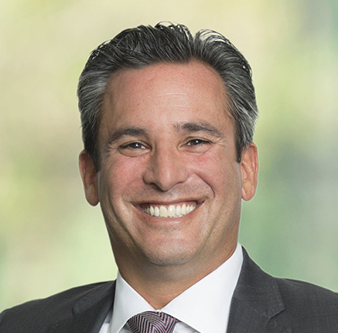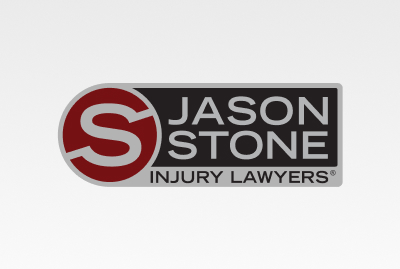To file a pedestrian accident claim, notify the at–fault driver’s insurance company and provide the necessary details. If the driver was uninsured or fled the scene, check if your own insurance policy includes uninsured motorist coverage.
If claim adjusters refuse to offer a fair settlement, you could file a personal injury lawsuit to get the compensation you need to rebuild your life. A Boston pedestrian accident lawyer will review your options for compensation and guide you through the process.
File an Insurance Claim for a Pedestrian Accident
After a pedestrian accident, contact the at–fault driver‘s insurance provider. Provide basic details about the accident, such as the date, time, and location, but avoid admitting fault or speculating about what happened. Anything you say may be used against you to devalue or dismiss your pedestrian accident claim.
The insurance company is likely to ask for a police report and medical records, so have these documents ready. If the driver is uninsured or has fled the scene, uninsured motorist coverage will potentially help cover your losses.
Submit a Formal Demand Letter
If you suffered serious injuries, you may need to send a formal demand letter to the insurance company. This letter explains the accident, your injuries, and the compensation you need.
Your demand letter should include:
- A clear summary of the accident
- A description of your injuries
- Proof of expenses
- An explanation of pain and suffering
- The amount you are requesting
Work With an Insurance Adjuster
After you file a pedestrian accident claim, the insurance company will assign an insurance adjuster to handle your case. The adjuster’s job is to investigate the accident and determine how much the company should pay.
The claim adjuster is likely to:
- Review police reports to understand how the accident happened.
- Speak with witnesses to gather additional details.
- Examine medical records and bills to assess the extent of your injuries.
- Evaluate your treatment plan to determine if ongoing care is needed.
While the adjuster seems helpful, remember that they work for the insurance company. Their goal is to settle pedestrian accident claims for as little as possible. Be careful when discussing your injuries, and avoid giving recorded statements without legal advice.
Negotiate a Fair Settlement
After the insurance company reviews pedestrian accident claims, they will likely offer settlements. However, the offer might not fully cover all losses. Do not accept the initial offer without first reviewing it with a pedestrian accident lawyer.
If you agree to a settlement, you will need to sign a release of claims document. It confirms that you are accepting the settlement and will not pursue further legal action against the insurance company for the same accident.
If the insurance company refuses to increase their offer, your attorney can continue the fight in court. They will file a personal injury lawsuit against the defendant and present the case before a judge and jury.
File a Personal Injury Lawsuit After a Pedestrian Accident
If someone else’s negligence caused the pedestrian accident, you have the option to file a personal injury lawsuit against the responsible party. While taking legal action seems overwhelming, a pedestrian accident attorney handles all the legal details of your case so you are able to focus on healing.
File a Complaint
The complaint is the first official step in a personal injury lawsuit after a pedestrian accident. Your lawyer will draft and file this legal document in court, outlining the details of your case.
The complaint includes:
- How the accident happened
- Why the other party is at fault
- The compensation you are seeking
Serve the Defendant
Once the complaint is filed, the defendant (the person or company you are suing) must be formally notified of the lawsuit. This is done through a legal process called service of process, which ensures they are aware of the case and have a chance to respond.
Defendant’s Response
After being served with the complaint, the defendant must file a legal response within a set time frame. They have two main options: admit fault or deny the claims. If the defendant denies responsibility, the case moves forward to the discovery process.
Discovery Process
During the discovery process, both sides gather and exchange evidence to build their cases. This phase allows each party to understand the strengths and weaknesses of the other side’s arguments.
Key parts of discovery include:
- Depositions: These are interviews conducted under oath with witnesses, accident victims, and involved parties. The statements are recorded and can be used in court.
- Document requests: Each party will collect important records such as police reports, medical bills, insurance claims, and employment records to support the case.
- Expert testimony: Specialists, such as medical experts, accident reconstructionists, or financial analysts, may provide professional opinions on injuries, how the accident occurred, or financial losses.
Pre-Trial Negotiations
Before going to court, both sides try to settle the case to avoid the time and expense of a trial. This can happen through mediation (a neutral third party helps both sides communicate and work toward a fair agreement) or settlement discussions (lawyers negotiating directly before exchanging offers and counteroffers to settle).
Many pedestrian accident claims are settled during this stage, allowing victims to receive compensation faster while avoiding the risks of trial. However, if negotiations fail, the case will proceed to court.
Trial
If no settlement is reached, the case goes to trial, where a judge or jury will review the evidence and make a final decision. During the trial, both sides will present their arguments, call witnesses, and submit evidence to support their claims. The court will decide who is responsible for the accident and how much compensation should be awarded.
The Statute of Limitations
Each state has a statute of limitations that determines how much time you have to take legal action against the at-fault party. If you do not meet this deadline, you risk losing your chance to get maximum compensation.
For example, in Massachusetts, under Mass. Gen. Laws Ch. 260, section 2A, you generally have three years to file a personal injury lawsuit. However, depending on the unique details of your case, you might have a different deadline. After reviewing your claim, your attorney will be able to tell you exactly how much time you have to take legal action.
A Pedestrian Accident Lawyer Will Review Your Options for Financial Recovery
A pedestrian accident lawyer will evaluate your case and help you determine the best way to seek compensation. They will evaluate the details of your accident, assess your injuries, and explain your legal options.
You may be able to file an insurance claim with the at-fault driver’s policy. If the insurance company offers a low settlement or denies your claim, your lawyer will likely recommend filing a personal injury lawsuit to pursue full compensation. Your lawyer will guide you through the process and fight for the best possible outcome.
Call a Pedestrian Accident Lawyer Today
Our firm works on a contingency fee basis, meaning you don’t owe us anything unless we successfully resolve your case. Our payment comes as a percentage of your settlement or awarded compensation, so there are no upfront costs or out-of-pocket expenses. This commitment is backed by our Stone Cold Guarantee®.
At Jason Stone Injury Lawyers, we prioritize your well-being. We understand how overwhelming it is to deal with the impact of an injury, so we handle all the legal matters on your behalf.
Not Trusting What You’re Being Told?
Better Phone Stone
800-577-5188
 START MY NO OBLIGATION CONSULTATION
START MY NO OBLIGATION CONSULTATION









